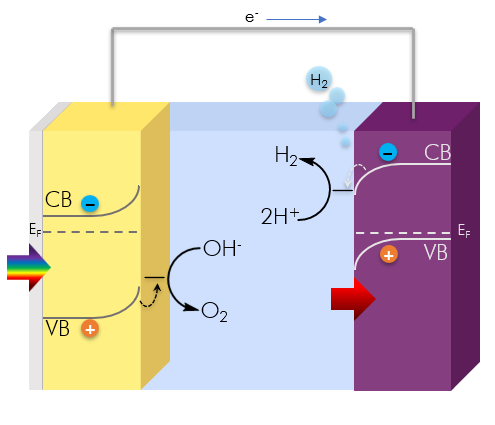Solar water splitting

Hydrogen is considered one of the pillars of the transition to a more sustainable economy. The conventional way to produce this precious gas without the use of fossil fuels makes use of a zero-emissions energy source coupled to a dark electrolyzer, that creates hydrogen and oxygen from water by applying a potential difference between two electrodes in solution. This technology is struggling to compete economically with steam gas reforming, where methane is employed to obtain the hydrogen and carbon dioxide is produced as a byproduct, because of its need for rare and precious materials and its unavoidable complexity. An alternative route that is being explored is direct photoelectrochemical water splitting. In this technique, one or two semiconductor electrodes are put directly in contact with water. These materials can absorb the energy carried by light and transfer it to the solution, promoting endothermic reactions like water splitting. Because of the collapse of the energy source and the electrolyzer in a single device, this technology lends itself to a higher scalability and some alternative applications, like the use in off-grid communities. Besides, lower cost materials can be used, driving down the cost and potentially making this method economically competitive.